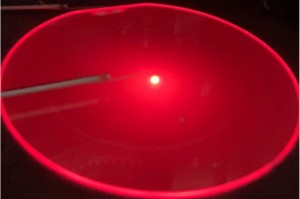
LEDs light up our world, and at the heart of every high-performance LED lies the epitaxial wafer—a critical component that defines its brightness, color, and efficiency. By mastering the science of epitaxial growth, manufacturers are unlocking new possibilities for energy-saving and cost-effective lighting solutions.
1. Smarter Growth Techniques for Greater Efficiency
Today's standard two-step growth process, though effective, limits scalability. Most commercial reactors grow just six wafers per batch. The industry is shifting toward:
- High-capacity reactors that handle more wafers, cutting costs and boosting throughput.
- Highly automated single-wafer machines for superior consistency and repeatability.
2. HVPE: A Fast Route to High-Quality Substrates
Hydride Vapor Phase Epitaxy (HVPE) rapidly produces thick GaN layers with fewer defects, perfect as substrates for other growth methods. These freestanding GaN films could even rival bulk GaN chips. The catch? Thickness is hard to control, and the chemicals can degrade equipment over time.
3. Lateral Growth: Smoother Crystals, Better Light
By carefully patterning the wafer with masks and windows, manufacturers guide the GaN to grow not just upward, but sideways too. This "lateral epitaxy" fills in the gaps with fewer defects, creating a more flawless crystal structure for high-efficiency LEDs.
4. Pendeo-Epitaxy: Letting Crystals Float
Here’s something fascinating: engineers grow GaN on tall columns and then let it “bridge” over empty space. This floating growth eliminates much of the strain caused by mismatched materials, giving rise to crystal layers that are stronger and purer.
5. Brightening the UV Spectrum
New materials are pushing LED light deeper into the UV range. Why does this matter? UV light can activate advanced phosphors with much higher efficiency than traditional options, opening the door to next-gen white LEDs that are both brighter and more energy-efficient.
6. Multi-Quantum Well Chips: Color from Within
Instead of combining different LEDs to make white light, why not grow it all in one? Multi-quantum well (MQW) chips do just that by embedding layers that emit different wavelengths, mixing light directly within the chip. It's efficient, compact, and elegant—though complex to produce.
7. Recycling Light with Photonics
Sumitomo and Boston University have shown that stacking materials like ZnSe and AlInGaP on blue LEDs can "recycle" photons into a full white spectrum. This smart layering technique reflects the exciting fusion of materials science and photonics at work in modern LED design.
How LED Epitaxial Wafers Are Made
From substrate to chip, here’s a simplified journey:
- Growth Phase: Substrate → Design → Buffer → N-GaN → MQW → P-GaN → Anneal → Inspection
- Fabrication Phase: Masking → Lithography → Etching → N/P Electrodes → Dicing → Sorting
This meticulous process ensures each LED chip delivers performance you can count on—whether lighting up your screen or your city.
Post time: Jul-08-2025
